
The hazel (Corylus) is a genus of deciduous trees and large shrubs native to the temperate Northern Hemisphere. The genus is usually placed in the birch family Betulaceae, though some botanists split the hazels into a separate family Corylaceae. The fruit of the hazel is the hazelnut.
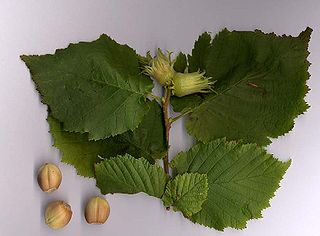
Corylus avellana, the common hazel, is a species of flowering plant in the birch family Betulaceae. It is native to Europe and western Asia. It is an important component of the hedgerows that were the traditional field boundaries in lowland England. The wood was traditionally grown as coppice, the poles cut being used for wattle-and-daub building and agricultural fencing.

Corylus cornuta, the beaked hazelnut, is a deciduous shrubby hazel with two subspecies found throughout most of North America.

Pandemis cerasana, the barred fruit-tree tortrix, is a moth of the family Tortricidae.

Cydia latiferreana, the filbertworm moth, is a moth of the family Tortricidae. It was formerly separated in a monotypic genus Melissopus.

Acronicta falcula, the corylus dagger moth, is a moth of the family Noctuidae. The species was first described by Augustus Radcliffe Grote in 1877. It is found in the United States and Canada from southern New England to southern Manitoba and Iowa. Recently seen from Wisconsin, Connecticut, Rhode Island, New York and Michigan. It is reported as rare in Ohio. It is listed as a species of special concern in the US state of Connecticut.

The lobster-clawed moth is a moth of the family Gelechiidae. It is found in most of Europe, except for the Iberian Peninsula and most of the Balkan Peninsula. In the east, the range extends to Siberia and Taiwan.

Stigmella floslactella is a moth of the family Nepticulidae. It is found in all of Europe, except the Balkan Peninsula and the Mediterranean islands.

Phyllonorycter coryli, or nut leaf blister moth, is a moth of the family Gracillariidae. It is found most of Europe, except the Balkan Peninsula.
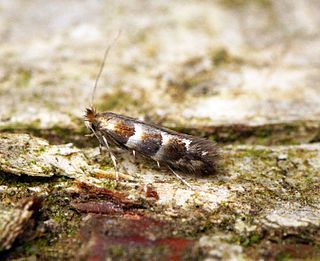
Phyllonorycter nicellii is a moth of the family Gracillariidae. It is found in most of Europe, except the Balkan Peninsula and the Mediterranean islands.
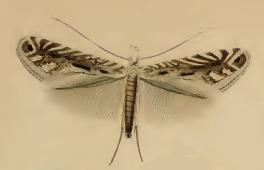
Parornix devoniella is a moth of the family Gracillariidae. It is known from all of Europe.

Gypsonoma dealbana, the common cloaked shoot, is a moth of the family Tortricidae.

Coleophora binderella is a moth of the family Coleophoridae. It is found from Scandinavia and Finland to the Iberian Peninsula and Italy, and from Ireland to the Baltic States and Romania.
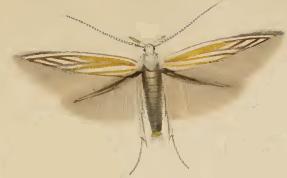
Coleophora currucipennella is a moth of the family Coleophoridae found in Europe. It was first described by Philipp Christoph Zeller in 1839.
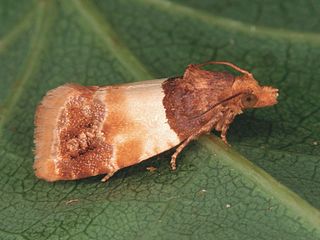
Epinotia festivana is a species of moth of the family Tortricidae. It is found in most of southern Europe and the Near East.

Bucculatrix demaryella is a moth of the family Bucculatricidae. The species was first described by Philogène Auguste Joseph Duponchel in 1840. It is found in most of Europe, Russia and Japan.
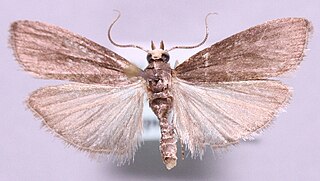
Salebriopsis is a monotypic snout moth genus erected by Hans-Joachim Hannemann in 1965. Its single species, Salebriopsis albicilla, was first described by Gottlieb August Wilhelm Herrich-Schäffer in 1849. It is found in most of Europe, except Ireland, Portugal, most of the Balkan Peninsula and Ukraine.
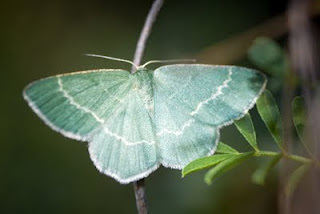
Chlorissa cloraria, the southern grass emerald, is a species of moth in the family Geometridae. It is found in most of Europe, except Ireland, Great Britain, the Netherlands, Denmark, Fennoscandia, Estonia and northern Russia.
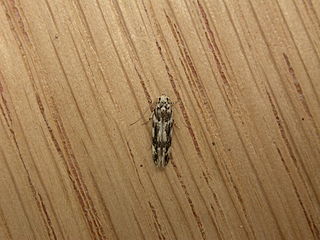
Parachronistis albiceps, the wood groundling, is a moth of the family Gelechiidae. It is found in most of Europe, except the Iberian Peninsula and part of the Balkan Peninsula. Outside of Europe, it is found in southern Siberia, the Russian Far East and Korea.
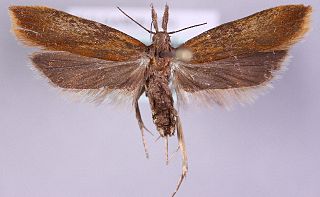
Dichomeris ustalella is a moth in the family Gelechiidae. It is found in south-eastern Siberia, the Caucasus, Transcaucasia, Korea, Japan, China and Europe, where it has been recorded from most of the continent, except for Ireland, the Iberian Peninsula and Scandinavia.

















